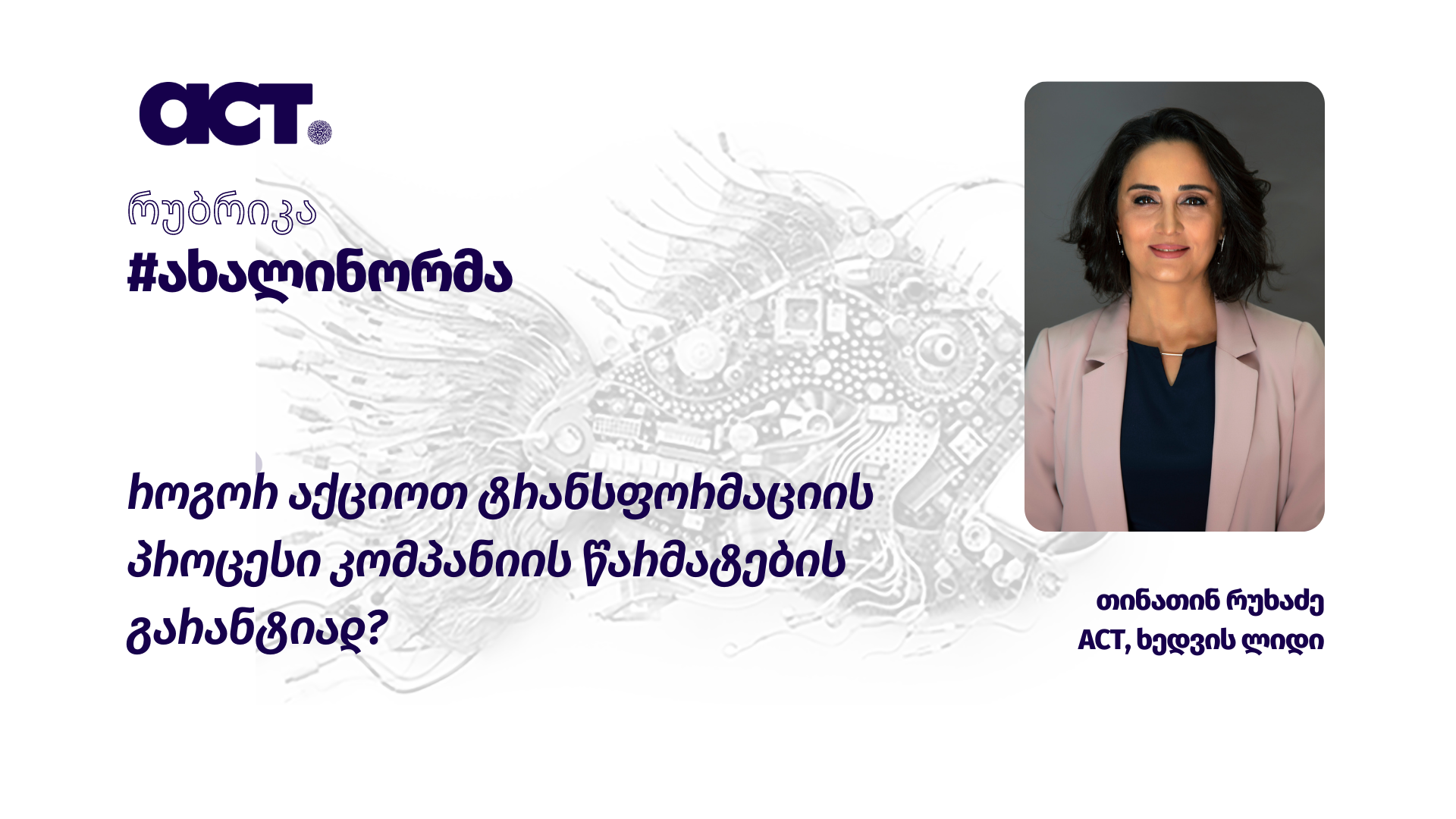Manage the cause, not the result – this phrase belongs to the founder of Total Quality Management, William Edwards Deming. Total Quality Management is a concept, designed to create such an environment for the entire organizational staff, where the employees are given the floor to continuously develop and build their capacity and skills in order to born valuable products and services for their customers. Even though this phrase sounds short and simple, it dramatically transforms the behavior paradigm dominating nowadays.
Literary, in almost every organization we find a manager who does not like to hear about problems, and the employee bringing that issue to the agenda is usually doomed to be placed off. The way how a Manager behaves, in this case, serves as a sign to others meaning that talking over the issues is supposedly far not appreciated. Accordingly, all the employees use to try to represent any point in a positive context and whenever an issue arises due to mistakes made or due to an unaccomplished project, the Manager rebukes the employee, in another case, detains part of his salary or even dismisses him altogether. All the said above serves as a good example of Managing the Result and the way how to combat it. In some organizations, such behavior is so much appreciated, that rebuking the employee and/or posing sanctions on him is considered a “good management” example so far. Such behavior, as a rule, restrains from identifying a real cause, meaning that the issue cannot be solved and it will inevitably show up again.
Transformation of the existing paradigm actually starts when a process becomes the main target, instead of assessing the employee’s fault. The processes taking place within the organization are the very place where the causes keep generating while leaving the space for the employees to make mistakes and perform their work inefficiently. Any process within the organization should serve to the creation of values for the customers and/or to the reduction of the risks of making mistakes at least. Thus, any process or any part of the process which does not serve to achieve either of these two goals mentioned above can be qualified as a loss. This kind of loss being accumulated through the flow of the processes usually causes a decline in the efficiency of the company and hampers the accomplishment of major goals.
To identify and manage the losses found in the processes it is necessary to learn the opinions of the employees actually involved in those processes, as they are carriers of the valuable information required for finding the actual causes. The fact is that whenever an employee is scared by the “follow-up punishment”, he tries to share possibly less information in consideration that each extra word uttered can eventually lead to more severe “punishment”. Therefore, the first priority of the company is to give the employees a sense of security. To achieve the above, we need to openly announce that mentioning the deficiencies and losses existing in the process will in no way lead to the punishment and setting off the employees concerned. It is most important to each employee to know that his voice is heard and he can express his opinion freely without any restrictions. It is significant that this process should not be shaped into the talks about winning the mark and endless complaints, though each deficiency or deviation discussed should be grounded and based on actual facts.
While having the said discussions it is important to depersonalize the processes and the steps undertaken. This approach can easy the way the employees talk over any action or when a certain employee refers to a specific action or a part of the process as a loss. It never causes a sense of discomfort or does not lead to conflict situations in most cases. It is important that everyone agrees on that if any action undertaken in the process is acknowledged as a failure, it does not inevitably mean that the employee who made it, is of no good.
As a rule, discussing the processes and the conversations around the topic take place in the meeting room or at the Manager’s Office. This is where the employees often dispute over the ways of the flow of the processes. To avoid such meaningless and ineffective disputes would not it be better if simply everyone just starts observing the process and agrees that the process is like the one that everybody sees. This behavior may even help the Manager sitting in his office to see and feel what are the challenges his employees have to deal with. While “overseeing” the processes the questions put by the Manager should in no way imply the threat within but indicate the readiness to show support and compassion. The openhearted and sincere gratitude expressed by the Manager to his employees for their answers and their time will significantly grow the confidence of the employees towards the process.
As soon as the agreement on the process and the losses identified within is achieved, there comes the necessity of making changes. It is important to ensure the involvement of the employees in planning for the changes as this will make them feel more responsible for the process is a part of it and when the process is successful they even may feel proud of it. Fear of changes is common to all humans and you can often hear the accompanying words like “it is of no good,” “it will not work” etc. To avoid such an approach, it is important that the employees involved in the process understand that everybody is “on board” (“in the same boat”) and they all share the responsibility for its success or failure. Make efforts to promote the way of thinking, where the questions like “how it could be done?”, “What is needed to make this possible?”, “What is the cost of this getting accomplished?” or “let us try and then discuss will it work or not” dominate.
The next powerful enemy to the possible changes to be made to the process and a spot generating causes for losses definitely - is the inheritance of the actions within the process. We often come across the mechanical actions performed by the employees unconsciously. This is peculiar to the kind of organizations where putting of the question “Why?” is not much appreciated. The organization’s aim is to ensure that each employee is motivated and encouraged to put a constructive question “Why?” To put this question in a due manner and to appreciate it means that everyone in the organization is constantly watching and finding the losses and brainstorming on how to correct the issue.
General Diagram of the constant process of identifying the losses and making improvements looks like the one below:
On the long way of constant changes to the process we should always remember the following:
Acknowledgment of the problem means getting it solved by 70%
99% of the problems are caused by the poorly organized process and not by the employees
Wisdom and experience of the many weigh way too much rather than that of one man
Make a try first and only then say whether “it does work or not”
There are no limits, improvement of the process can be endless
According to Heraclitus: “The only constant in life is change.” Today these words make more sense than ever. The changes can be painful but they are inevitable.
Relying on the support of the executive branch, a united effort of the employees on the way towards the improvement of the process is actually the key to a successful accomplishment of the company’s goals. Research and Consulting Company ACT tested this concept first within its own organization and only after shaping it into the unique transformational and management model PWR3, which is widely offered now to the company’s clients. Back in 2021, the company launched a great transformational process, where the main three forces – Managers and their philosophy, employees and the organizational culture, and well-administered processes collaborated to make the common mechanism work. It is obvious, that rearrangements to move to the said mode of thinking and starting transformational processes will not be that easy, though everybody agrees that changes are needed for moving forward and achieving greater goals.
If you get the same results as last year and you guess you need improvements, we are here to remind you, please, could you appraise: how actual is the point of view of Heraclitus today, regarded as The New Norm.






